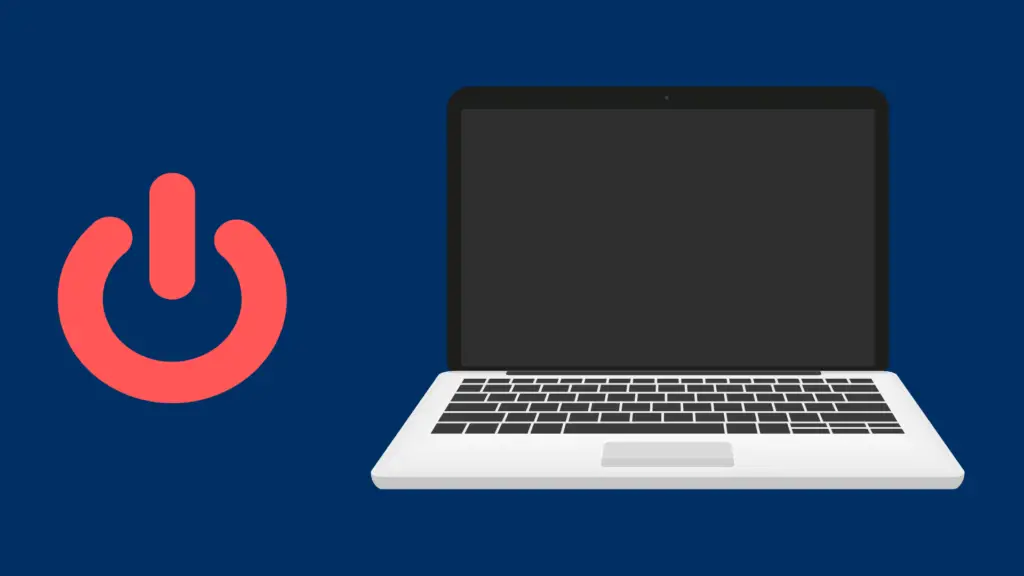How to Fix a MacBook Screen that Keeps Turning Off

If you’ve been using a MacBook for a while, you may have experienced the screen turning off suddenly. This can be frustrating and make it challenging to work on your computer.
If you’re worried, don’t be. There is a way to fix it, and we’re here to help. We’ll walk you through the steps so that you can get back to enjoying your MacBook worry-free.
MacBooks are a popular laptop choice for many people, but they can be frustrating if the screen keeps turning off. It’s a common problem, and there are several ways to fix it. In this blog post, we’ll explain what causes the problem and how to solve it. We’ll also show you how to prevent the screen from turning off in the future. So if your MacBook is giving you problems, keep reading! We’ll help you get it back up and running in no time.
Why Your MacBook Screen Keeps Turning Off
The first step in determining why your MacBook Pro shuts down suddenly is to discover the most likely cause. You’re not alone when something goes wrong with your device; it’s an issue shared by many people. Apple addressed the problem in 2019 and provided a troubleshooting guide to fix it.
Random shutdowns on a Mac are most often the result of the following:
Malware
A variety of issues might plague a MacBook if it is infected by malware. Maintaining a clean PC and doing regular maintenance will keep it running smoothly.
An older version of OS.
Your MacBook Pro may also unexpectedly shut down if you have an earlier version of the OS installed.
Errors in Software
You won’t run into any problems if you utilize legitimate software and keep it up to date.
Faulty Peripheral Device
If your MacBook randomly shuts down, it might be because of a defective or incompatible auxiliary device.
Overheating
If your Mac overheats, it may shut itself down to protect its internal parts. The majority of the time, a random shutdown is the consequence of the MacBook lacking sufficient airflow. To ensure there’s enough ventilation, it’s best to keep your laptop on a level surface.
You may wish to use compressed air to clear out the air vents to avoid clogs. As a safety precaution, we recommend that MacBooks not be used over 95 degrees Fahrenheit. Here are a few techniques for keeping a hot MacBook cool.
Tips on How to Fix MacBook Screen from Randomly Turning Off
There are a few methods that you can try to fix your MacBook if it is randomly shutting off. We’ll outline some of the most effective techniques below.
Check Your Battery
The first thing you should do is check your battery. A low battery might be why your MacBook Pro shuts down unexpectedly.
To check the status of your battery, go to > About This Mac. In the window that pops up, click on System Report. The System Information window will open, and from there, you can select Power from the sidebar on the left. This will show you detailed information about your battery’s health, cycle count, and maximum capacity.
If your battery is below 80% health, we recommend that you replace it. You can buy a new battery from the Apple store or an authorized reseller.
If your MacBook Pro is still under warranty, you can take it to an Apple Store, and they will replace the battery.
Update Your Software
Another solution is to update your software. Outdated software can cause your MacBook to shut down unexpectedly.
To ensure that you have the latest version of macOS, open the App Store and click on Updates in the toolbar at the top of the window. Click on the Update button next to the macOS update to install it. If any updates are available, they will be listed here.
If you’re not sure which software is causing the problem, update all of your software. This includes macOS, your browser, and any other applications that you might have installed on your computer.
Run a Malware Check on Your MacBook
If your MacBook screen keeps turning off, there’s a good chance that you’re dealing with a malware issue. The first step in fixing the problem is to run a malware check on your computer. There are several different malware checkers available online, but my personal favorite is Malwarebytes.
Malwarebytes is a comprehensive malware checker that will scan your computer for any signs of infection. The program is free to download and use, and it’s straightforward to use. Launch the program and click the “Scan” button. Malwarebytes will then scan your computer for malware infections.
If Malwarebytes finds any malware infections, it will automatically remove them. The program also includes a “Quarantine” area where it will quarantine any malware that it finds. You can then view the quarantined files to see what they are and decide whether you want to remove them or not.
If you’re having problems with your MacBook screen turning off, I recommend running a malware check on your computer. Malwarebytes is a great program, and it can help you fix the problem quickly and easily.
Reset SMC
Another solution is to reset the System Management Controller (SMC). The SMC controls power management for your Mac, and if it’s not working correctly, it can cause your computer to shut down unexpectedly.
Unplug your MacBook Pro from the power adapter and remove the battery to reset the SMC. After about five seconds, plug the power adapter back in and reinsert the battery. Press and hold the power button for about ten seconds until you see the Apple logo.
There are a few other techniques to reset the SMC, depending on your MacBook:
- T2 Security Chip iMac or MacBook
- T2 Security Chip-less iMac
- Without T2 Security Chip (Non-Removable Battery)
- T2 Unsecured MacBook (Removable Battery)
Hold “Option” and navigate to Apple > System Information to see if your system has T2 security. Then, on the left, select Controller or iBridge. If you have a T2, it will be listed.
T2 Security Chip iMac or MacBook:
- Go to Apple > Shut Down to turn off your Mac.
- Hold the power button for 10 seconds to fully shut down.
- After 5 seconds, push again to turn it on.
Otherwise, attempt the non-T2 chip iMac instructions.
If this doesn’t work, try the following instructions:
- Go to Apple > Shut Down your MacBook
- For 7 seconds, hold [right] shift, [left] option, and [left] control buttons.
- Keep holding and push the power button for seven more seconds.
- Release all keys simultaneously, then pause for 5 seconds.
- Normally start the MacBook.
T2 Security Chip-less iMac:
- Go to Apple > Shut Down your iMac
- Remove the power cable when finished.
- Wait 15 seconds before re-plugging
- Wait 5 seconds and turn on the iMac.
MacBook Without T2 Security Chip (Non-removable Battery):
- Go to Apple > Shut Down your MacBook
- Unplug the power cable for 5 seconds.
- Connect an Apple power adapter
- Simultaneously hold for 10 seconds, shift+ control+ option and power button, then release them all together.
- When all buttons are released, the MagSafe light should blink.
- Normally start the MacBook
MacBook without a T2 Security Chip (Removable Battery):
- Go to Apple > Shut Down your MacBook and disconnect from power.
- After that, remove the battery.
- Hold on for 5 seconds on the power button.
- Reconnect the battery and restart the MacBook.
Reset the PRAM
If you’re still having problems, you can try resetting the PRAM. The PRAM stores information about your hardware, such as the type of display you’re using and the date and time. If this information is incorrect, it can cause your MacBook to shut down unexpectedly.
To reset the PRAM, restart your computer and press and hold Command-Option-P-R until you hear the startup sound for a second time.
Replace Your RAM
If your MacBook is shutting down unexpectedly, it might be because of a faulty or incompatible RAM module.
Open System Information and select Memory from the sidebar on the left to test this. If any errors are listed under the Error column, your RAM is not compatible with your computer.
You can try to fix the problem by replacing the RAM module with a compatible one. We recommend that you take your MacBook to an Apple Store or an authorized reseller to have them do it for you.
Shut Down Cleanly
If you’ve tried all of these solutions and your MacBook is still shutting down unexpectedly, the last thing you can do is shut it down cleanly.
To do this, hold down the power button for about six seconds until your computer turns off. Then unplug the power adapter and remove the battery. After about five seconds, plug the power adapter back in and reinsert the battery. Press and hold the power button for about ten seconds until you see the Apple logo.
These are some of the most common solutions for fixing a MacBook that is shutting down unexpectedly. If you’re still having problems, we suggest taking your computer to an Apple Store or an authorized reseller for assistance.
Tips on How to Prevent Your MacBook Screen From Turning Off Randomly
Here are some pointers on how to keep your Mac from turning off without warning.
- Monitor Your Battery
A bad battery might be to blame for your screen’s random shutdown. To avoid this, keep an eye on the health of your Mac’s battery at all times. Here’s how you can do it:
- Go to Apple’s menu.
- Then, open System Preferences, select Power, and select Hardware from the drop-down menu.
- Your Mac’s battery life is displayed here.
Batteries, even rechargeable ones, have a finite lifespan. Each battery may only be charged a certain number of times before it has to be replaced. You’ll need to get a new battery after that because the old one is no longer serviceable. The number of times your MacBook battery is recharged represents how much it has been used.
In the Apple menu, click “About This Mac” to see your Mac’s current battery cycle count. Select “System Report,” then select “Hardware,” and then select the “Power” section. The current cycle count may be seen in the “Battery Information” section.
A charge cycle does not always imply a single charge of the battery. For instance, discharging from 100% to 40%, then recharging to 100%, and then discharging to 40% is a single cycle of charging and discharging. Each battery type has a different maximum number of cycles.
This option in System Preferences > Battery lets Mac OS pick when to charge above 80 percent to keep the battery healthy over time. Newer MacBooks often survive up to 1,000 cycles, although older ones only gave 300 cycles. For additional information, check out this article on how Apple’s efficient battery charging works.
2. Peruse the Logs.
To avoid any trouble with your Mac, it’s essential to keep track of its logs. Whether you’re dealing with a battery drain or an app taking too much power, Mac log will give you a comprehensive report. To avoid any issues, be sure to check your Mac’s logs on a frequent basis. You may access Activity Monitor by going to Applications > Utilities > Application Monitor.
3. Conserve Your Energy.
You may also preserve power, which will ensure that your computer is running at its best. Under the “System Preferences” section, you’ll see these options.





